#Small Goshawk
Explore tagged Tumblr posts
Text

May 14, 2025 - Spot-tailed Sparrowhawk or Spot-tailed Goshawk (Tachyspiza trinotata) These small hawks are found in forests, including mangroves, on the islands of Sulawesi, Talisei, Muna, and Butung in Indonesia. Hunting from perches, they feed on small lizards and snakes, as well as frogs, snails, large insects, and sometimes bats and small birds. Their breeding habits are unknown.
#spot-tailed sparrowhawk#spot-tailed goshawk#hawk#raptors#tachyspiza trinotata#bird#birds#illustration#art#tropical#birblr art
54 notes
·
View notes
Text

Lubo Ondráško, photographer
Accipiter gentilis
Slovakia 2025
The Eurasian goshawk (/ˈɡɒsˌhɔːk/; Astur gentilis, formerly Accipiter gentilis) is a species of medium-large bird of prey in the family Accipitridae, a family which also includes other extant diurnal raptors, such as eagles, buzzards and harriers. It was formerly placed in the genus Accipiter. It is a widespread species that inhabits many of the temperate parts of the Eurasia.[3] Except in a small portion of southern Asia, it is the only species of "goshawk" in its range and it is thus often referred to, both officially and unofficially, as simply goshawk. It is mainly resident, but birds from colder regions migrate south for the winter
77 notes
·
View notes
Text
willas tyrell showing you his hawks



Willas stood near the central perch, leaning on his cane, a russet-hooded hawk perched on his gloved hand. His leg, stiff and slightly twisted beneath dark riding trousers, was braced with a subtle iron rod. Yet there was no trace of discomfort in his bearing, only the quiet pride of a man in command of the skies.
“She’s a second-generation crossbreed,” he said without looking at you. “Northern gyrfalcon mixed with an Andal goshawk. Strong shoulders, sharper instincts.”
He extended the bird slightly. “Her name is Redwing.”
Redwing blinked once, head tilting, hood hiding her killer’s eyes.
You stepped forward slowly, drawn by the energy, the twitching wings, the living pulse of creatures who freed themselves with their flights.
Willas led you down the line of perches. He has become an excellent breeder of hawks, you remember Lord Rowan, praising his birds at your grandmother’s last name day. Of how well-trained and graceful they are. By every moment you more and more believed his words were true.
“That one,” he said, gesturing to a gray-laced female with eyes like dusk, “was a gift from Oldtown’s Citadel. Their best healer bred her from near extinction. I call her Septa. She has the demeanour of one.” You glanced at the bird, who only watched you two peacefully.
He stopped before a white-and-gold hawk with a proud tilt to her head. “And her,” he said, a rare smile playing at his lips, “her name is Flow, for she is very quick. She once flew from here to Cider Hall and back, arriving before supper. ”
“How many do you have?” you asked, softly, looking around, being met with many different feathers.
Willas gave a breath of a laugh. “ My grandmother says I breed them as most lords breed bastards. The rest of my family agrees. ” you laughed lightly. From briefly meeting, the Queen of Thorns, you didn’t have a doubt in your mind she said it to him.
“Perhaps I should judge myself if you do own too many birds for my liking. “ he smiled at your eagerness, a kind brush of a light gracing his lips.
“ You would if you had to indulge in my activities every day. “ he lowered his gloved hand slightly as the hawk spread her wings in preparation, until it flew upward.
“If I were Lady of Highgarden, I might be more merciful to you, Ser Willas.” You winked at him, holding onto his free hand. A small blush creeped out below his eyes. He turned to his hawk, letting a cheering grin reveal.
Looking back to you. “For my lighter sleep, I shall make you lady of these gardens. “ He kissed your hand respectfully, continuing your tour of his birds, while you had to keep your calm at his last words.
#willas tyrell x reader#willas tyrell imagine#willas tyrell#asoiaf fic#asoiaf imagine#game of thrones#game of thrones imagine#asoiaf fanfic#asoiaf fandom#asoiaf x reader#asoiaf x you#game of thrones fic
38 notes
·
View notes
Text
Since I'm a huge fan of His Dark Materials, and now @linkeduniverse, I'm going to plunge right in and come up with what kind of dæmon each Link might have.
For context: In His Dark Materials, dæmons are the physical manifestation of a person's soul (usually in the form of an animal), and can interact with the world and their person (think of it as like a witch's familiar).
- - -
Sky: Red-chested Goshawk

- Admittedly picked due to the redish chest on this bird acting as a reference to the Crimson Loftwing.
- They can also be very protective of their nests ^^
- Sky's dæmon gets a bit exasperated trying to get her person to keep up with the rest of the group.
Four: Rainbow Leaf Beetle

- Admittedly I like the idea of this guy having a bug for a dæmon, and I think it's even more suiting if it reflected the different colours of the Four Sword ^^
- Four's dæmon is the quietest of the group. She doesn't talk much.
Time: Great Horned Owl

- Taking some inspiration from Jojo's original character concept art, of course this guy would have an owl! Owl's are also often associated with time.
- Like Time, his dæmon is an aged old man. Often looks to be dozing but the reality is that he is always hearing out for the group.
Warriors: Atlas Moth

- Admitedly, a moth is not the best choice for someone who faces the battlefield daily! But I liked the idea of Warriors having a dæmon that was striking, but was also soft and delicate like him.
- Atlas Moths are one of the largest moth species, but also gentle.
- Warrior's dæmon can be found resting on her person's shoulder or head.
Wind: Tern

- Naturally a seabird would make the most sense for Wind ^^ Besides being small, cute, and agile - terns are sociable, yet fiercely protective of their young (Aryll!).
- Being the youngest of the dæmons, Wind's is always trying to prove herself to the others.
- Also to note; in the HDM universe, dæmons can shapeshift during childhood and, once a person reaches puberty, the dæmon settles into a permanent shape. Given that Wind was 12 years old during his adventure, and is over 13 years old when Linked Universe takes place, his dæmon would have just settled prior to the start of the comic.
Twilight: Wolf

- Yes this is extremely predictable! But let's be honest - there is no other animal that suits this guy ^^;
- Perhaps in this version, Twilight's dæmon is imbued with more magical properties due to the influence of the Twilight Realm...
- A fun fact about wolves is that the packs they form are of a family unit. So you could say that Twilight Link is the alpha male protecting his cubs ^^
Legend: Hare

- I know a rabbit would be the obvious option (or known reasons lol) but given his character in Lu, and that hares are more solitary than rabbits, this seems the best fit.
- As a child, his dæmon would have shapeshifted to a rabbit a lot, but then changes on his journey, and to himself, meant his dæmon finally settled as a hare.
Hyrule: Raven

- Ravens are often associated with magic in folklore and mythology.
- As a talkative bird in nature, Hyrule's dæmon is often giving her input into his spells and chastising him if he gets it wrong.
Wild: Fox

- Not even a hard choice! An animal that is crafty, fast, and a trickster would suit Wild with ease ^^
- Wild's dæmon is a sweet creature, having memory loss just like him. She helps forage for the best ingredients for Wild's meals. She doesn't let Hyrule near the cooking pot.
- - -
All art credited to @jojo56830
#dæmons can also be male or femalrle#and have names - but I have no idea what names to call their dæmons right now ^^;#feel free to suggest ideas!#gosh this took me so long just to find the right images#hope you all like because I'm super proud#the legend of zelda#tloz#loz#linkeduniverse#linked universe#lu sky#lu four#lu time#lu warriors#lu wind#lu twilight#lu legend#lu hyrule#lu wild#his dark materials#daemon au#daemon#daemons
47 notes
·
View notes
Text













My Happy Marriage Season 2
Title Cards + Flowers & Birds
Ep 1: Autumn leaves + 2 robins
Ep 2: Ginkgo and rowan tree leaves + wagtail seguro
Ep 3: Drunken hibiscus + female redpoll, representing Miyo. The flowers' meaning is "change of heart".
Ep 4: Pomegranate flowers + female kestrel (a small bird of prey), representing Kaoruko
Ep 5: Beadle and geranium + two female finch birds. The beadle represents Kaoruko's feelings, and the geranium represents the feelings of Miyo, Kaoruko, Kiyoka and Godo. The finch mean "independence and friendship".
Ep 6: No card
Ep 7: New Year decorations, flowers and a lucky crane (red-crowned crane), which symbolizes longevity and marital harmony
Ep 8: Camellia + goshawk. The camellia means "single-minded love, ideal love," in reference to Miyo's conversations with Hazuki and Kaoruko about love. The goshawk represents Takakura. The color purple is for Prince Takaihito.
Ep 9: Snow-covered cherry blossoms, like in Takaihito's words from the previous episode: "The snow-covered dream flowers bring the curtains of night down." Also features a male mandarin duck in the top right and a female one in the bottom left, looking at each other. Their eyes have a touch of Kiyoka's and Miyo's eye color. The top left corner also hides a gun.
Ep 10: No card
Ep 11: Pink phalaenopsis and lily of the valley + dove. The flowers mean "I love you," and "return of happiness", respectively. The long, thin leaves are reminiscent of bear grass, and it incorporates the leaves of heart vine, which is believed to bring love to fruition. The dove represents Kiyo-kun.
Ep 12: Thistles + heron. The thistle has a variety of flower meanings such as "revenge," "parting," "don't touch me," and "peace of mind". The heron is deeply connected to the concept of life and death around the world.
Ep 13: Flowers from the ending + a couple of mandarin ducks. The flowers include cherry blossoms, lilies of the valley, canola flowers, gerberas, lillies, etc.
The title cards were drawn by Halka, with adjustments by color designer Anna Okamatsu
< Season 1
#my happy marriage#watashi no shiawase na kekkon#miyo saimori#kiyoka kudo#kaoruko jinnouchi#takaihito#naoshi usui#my happy marriage designs#flowers#birds#watakon
41 notes
·
View notes
Note
Riding off of the wave of someone asking for All Might--- Hawks MHA? Make that guy a bird man like he DESERVES !!! (Or. Another animal) Crushes that guy in my bare hands.
I liked Hawks but I was always underwhelmed by his design, it felt sort of boring and his wings were so small and unrealistic I always had trouble believing he could legit fly with them haha. He should've been more bird... and now he is

Keigo Takami - Hawks
I did want to choose a hawk for him, sometimes an animal-coded character is just that animal okay. I chose goshawks because they are in the family of "true" hawks, and somewhat smaller birds with more focus on speed and agility as compared to buzzards and eagles (also true hawks)
The red goshawk was really just chosen for its name as a reference to his wing color, though I did discover they're quite rare Australian birds which is fun
This isn't really canon accurate but as I was colorpicking for his hair I found the blonde stood out in a kind of funny way, so I added some darker reddish roots to kind of imply that he dyes his hair, and it was originally a color closer to his feathers
Imagine a world with me if Hawks was more bird but still had his canon personality... even just wing arms that would've ruled. I love seeing fantastical limitations on confident and popular in-universe characters
46 notes
·
View notes
Text

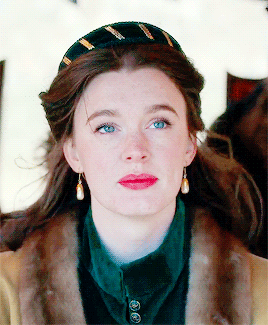
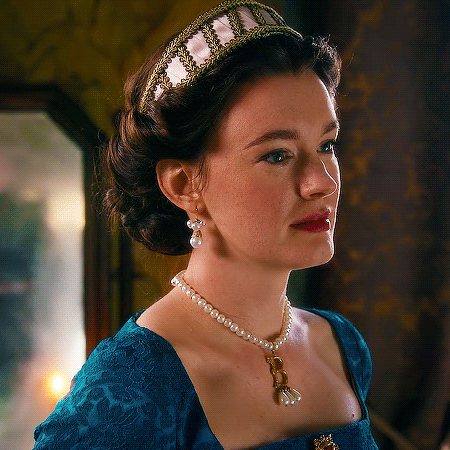
Amy James-Kelly as Myfanwy Tangwystl Greengrass (née Keirstead), the daughter of Lord Keirstead and Tangwystl Goshawk. She was born within the year 1955 as the youngest of her siblings and was immediately adored by her parents, especially by her mother who she had always been close to. During her youth, Myfanwy had a talent for languages, quickly mastering not only English and her mother's native Welsh, but also developing a keen interest in the ancient histories of the long-forgotten magical creatures now deemed to be nothing more than myths. The girl had always felt a pull towards the mystical, a fascination that set her apart from her more pragmatic siblings. From a young age, Myfanwy’s mother would take her out into the forests outside of their family’s estate to go looking for Pixies and Bowtruckles—all small, harmless creatures that she fawned over as a child.
Keirstead grew up with a soft heart, living with a rare emotional sensitivity to her surroundings. She was somewhat awkward and shy, much like her grandson, Scorpius Malfoy. Myfanwy struggled interacting with others, even once she enrolled at Hogwarts School of Witchcraft and Wizardry around the year 1966, where she was sorted into Ravenclaw House. Although Myfanwy had siblings in the years above her, she remained relatively unknown and didn’t socialize much with her peers. Even connections she made to students through family ties weren’t strong enough to consider legitimate friendships, which led her to be quite lonely.
By the time she reached her fifth year, Myfanwy had miraculously started befriending students in years both above and below her. One of these friendships led to a romantic relationship she struck up with Lysander Greengrass, a Slytherin classmate who was a year older than her. The couple had continued their romance throughout the remainder of their years at Hogwarts, later marrying each other in 1975. As a result of the union, Myfanwy would produce two daughters: Daphne and Astoria Greengrass, the latter becoming the wife of Draco Malfoy.
#myfanwy tangwystl greengrass#myfanwy tangwystl kierstead#tangwystl goshawk#lysander hyperion greengrass#greengrass family#kierstead family#ocs#my ocs#marauders era ocs#astoria greengrass#astoria malfoy#daphne greengrass#amy james kelly#oc faceclaim#fancasts
13 notes
·
View notes
Text
Just caught up on The White Vault Goshawk. The fandom is small on tumblr but I’m here to talk about it!
Lemme start by saying damn, the misfortune suffered by the characters this season was rougher to listen to than all the others. So I’m really glad we had the comic relief of Lewis. Idk if he was supposed to be comic relief, but something about a kidnapper being surprised that his victims don’t actually give a shit about his physical wellbeing is hilarious to me. Bruh.
38 notes
·
View notes
Text


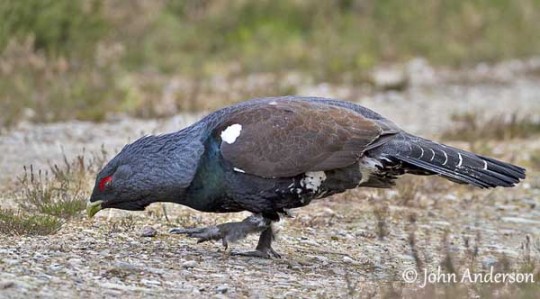
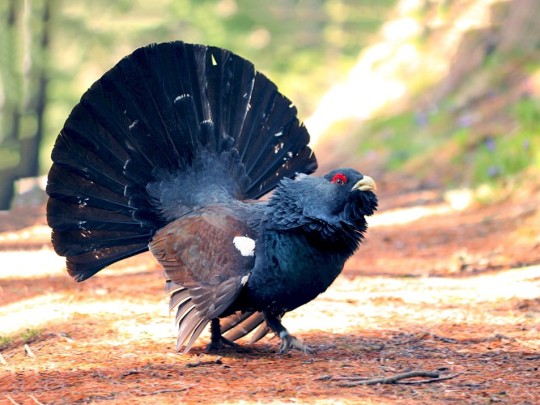

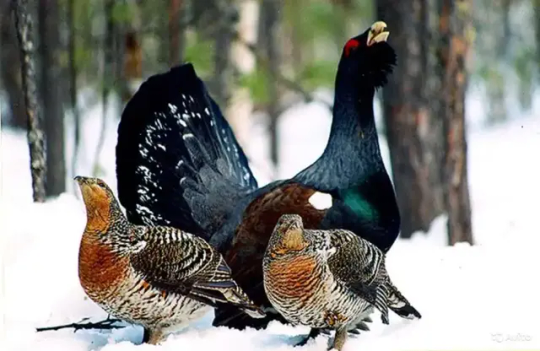
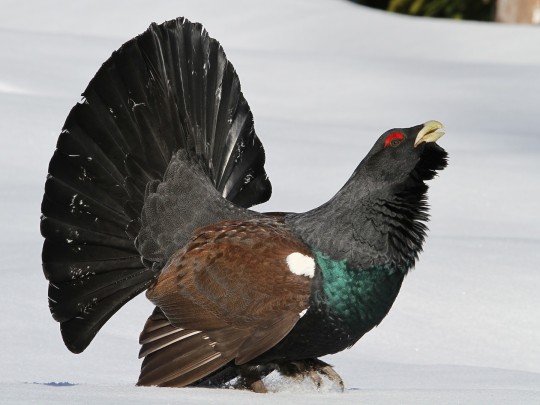
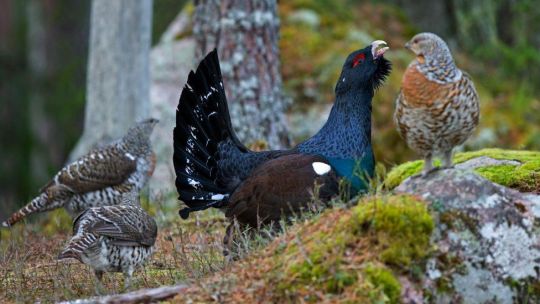
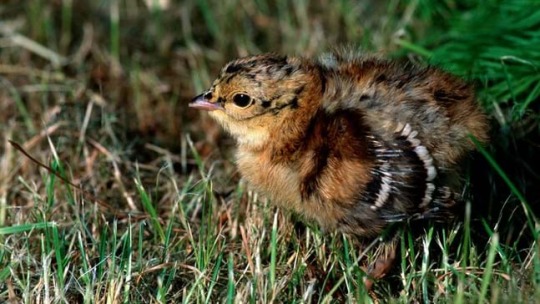
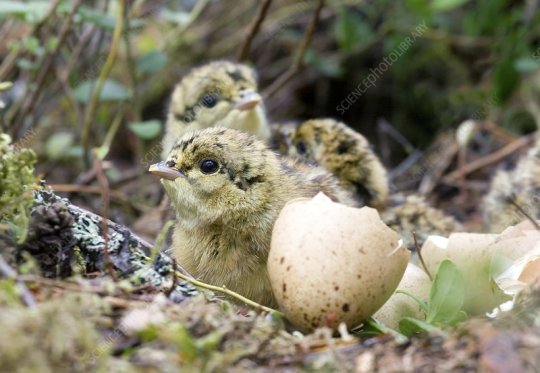
The western capercaillie (Tetrao urogallus), also known as the Eurasian capercaillie, wood grouse, heather cock, cock-of-the-woods, or simply capercaillie is a species in the grouse family which is endemic to the taiga and boreal forest of Northern Eurasia, from Scotland in the west to Russia in the east. They are typically diurnal ground dwelling birds which while capable of flight, are fairly clumsy in the air due to there short rounded wings. While taking off they produce a sudden thundering noise that deters predators. At night they rest in the horizontal branches of tree stands or within thick ground cover such as bushes and sedges, emerging during the day to feed upon seeds, buds, leaves, berries, insects, grasses, and conifer needles. Capercaillies are themselves eaten by wolves, lynx, foxes, eagles, martens, bears, boar, goshawks, and owls. With females reaching around 21- 25 inches (54- 64 cms) long & 3.5 to 5.8lbs (1.5 to 2.5kg) in weight while the male can reach 29 to 40 inches (74 -100cms) long and 9lbs to upwards of 15lbs (4 to 7kg) in weight, the western capercaillie is one of the most size sexually dimorphic living bird species, only exceeded by the larger types of bustards and a select few members of the pheasant family. The females upper parts are brown with black and silver barring; on the underside they are more light and buffish yellow. While the males are dark grey to dark brown, with the breast feathers being dark metallic green. The belly and undertail coverts vary from black to white. Both sexes have a white spot on the wing bow. They have feathered legs, and their toe rows of small, elongated horn tacks provide a snowshoe effect enabling them to traverse thick snow with ease. The breeding season begins in March or April and lasts until May or June. Three-quarters of this long courting season is mere territorial competition between neighboring cocks or cocks on the same courting ground. Towards the end of the courting season the hens arrive on the courting grounds, at which time the dominate cock or cocks flies to an open space nearby and continuously displays. If impressed one or more hens will approach and be mounted. Females will lay 3 to 12 eggs over a 10 day period, which she will incubate for 26 -28 days until hatching. The young will remain with there mother for around 3 months, Under ideal conditions a western capercaillie may live upwards of 18 years.
#pleistocene#pleistocene pride#pliestocene pride#pliestocene#cenozoic#capercaillie#western capercaillie#wood grouse#eurasian capercaillie#bird#birds
43 notes
·
View notes
Text
The State Bird Initiative: Pennsylvania (#2) - Results

Poll #2 in the books! Cutting this one short, since I think we've got all we're gonna get from this one for now. But, it's still open for the next couple of days, if anybody sees this by then and hasn't voted. That said! I'm gonna call it for now and show you the results as they stand, as well as my personal choice, just like last time. So, what does a small group of Tumblr contributors think the State Bird of Pennsylvania should be?

A sincere apology to the Ruffed Grouse, but it looks like we have a new State Bird of Pennsylvania!

SBI Elected State Bird of Pennsylvania: Wild Turkey (Meleagris gallopavo)
The popular choice for State Bird of Pennsylvania is the Wild Turkey (Meleagris gallopavo), and it's a pretty good choice in my opinion!
Somebody referred to this as a meme pick, and while it's possible the joke's on me here...I actually think this is a great choice for Pennsylvania. As I outlined in my original post, it's a favored bird of Benjamin Franklin, it's a popular bird for hunting and preservation in Pennsylvania already, and they're a major symbol of the country in general. Plus, Turkey Day in Pennsylvania will now take on a whole new meaning! That said, it's true that the distribution of the species is in nearly every state in the Union, but that actually makes the point more prominent. The Constitutional Capitol of the country has a State Bird found all over it! It works.
With that, I'll launch into my personal opinions for State Bird choices, but I will say: the Wild Turkey is the State Bird Initiative's personal choice for State Bird of Pennsylvania. Yeah, I agree with the masses on this one. So that's one down...but we're not done yet. But if you're satisfied with this, see you next time in the Garden State!

The State Birds Initiative Personal Pick - Pennsylvania (#2)
State Game Bird of Pennsylvania (SBI): Ruffed Grouse (Bonasa umbellus)
Y'know, I actually misspoke up there. The Ruffed Grouse (Bonasa umbellus) hasn't been dethroned, because it was never the State Bird in the first place; it was the State Game Bird, and I say it should stay that way! The Ruffed Grouse is a great game bird for the state, even if it's not dependent on it for its breeding population, so why not leave it in this position. I do still love that sound of drumming in the woods, and more people should experience that. OK. Now that that's done, time for the next pick!

State Raptor of Pennsylvania (SBI): American Goshawk (Accipiter atricapillus)
Man oh man, did I want the goshawk to win this one. But, instead, I'll settle for SBI's State Raptor. After all, the history of Hawk Mountain and conservation initiatives is dependent on this species. Now, that said, there is a point to be made: New York is a better fit here. Yeah, the American Goshawk (Accipiter atricapillus) barely has a foothold in the state of Pennsylvania, which is sort of the point of its inclusion here. But, at the same time, New York has MUCH better candidates for State Raptor, so I think we can give Pennsylvania this one. If you're stumbling on this post before seeing the original poll, please check that out first for more context here. In the meantime, let's keep going! We have some more to throw onto the pile here.

SBI's Big Fifty - Pennsylvania: Chestnut-sided Warbler (Setophaga pensylvanica)
This one is...controversial. Of the previous choice presented, which bird is a notable find for birdwatchers within Pennsylvania? That's the logic for the Big Fifty list, but...this one isn't as cut-and-dry. Honestly, Pennsylvania isn't terribly unique when it comes to the NE USA in terms of bird diversity (sorry, Keystoners), so there aren't as many reliable and unique species to be found here as opposed to other states that haven't been mentioned (a la the American Goshawk up there). And the Chestnut-sided Warbler (Setophaga pensylvanica) isn't unique to PA, that's for sure. I've seen them in NY, NH, and MA, personally. Still, it's a cool bird to see wherever it pops up. But why this bird for the Big Fifty?
Well, the fact that it breeds in the state is a pretty big bonus. I realize that the Red Knot doesn't breed in Delaware, but it's a notable enough species to make this list for birdwatchers. Likewise, the Chestnut-sided Warbler is a BIG highlight for amateur birdwatchers, and a nice sight-to-see for experienced birders. And the other candidates? Well, turkey, grouse, and goshawk are taken by other categories. Bonaparte's Gull (Chroicocephalus philadelphia) and the Mourning Warbler (Geothlypis philadelphia) are great, but are only included because of their species name, and barely breed in the state, making them an unreliable choice comparatively. And as much as I wanted to make this category the Philadelphia Vireo (Vireo philadelphicus), it doesn't breed in the state at all, making it the most poor candidate. So, Chestnut-sided is left standing. I am more than happy to take other suggestions for this category for PA, but that's the choice for the time being!
But wait...I forgot someone.

State Conservation Focus (SBI): Pileated Woodpecker (Dyrocopus pileatus)
...OK, hear me out. I was actually bummed that the Pileated Woodpecker (Dryocopus pileatus) didn't get the trophy of State Bird of Pennsylvania. Sure, a huge part of that was the whole Keystone's keystone thing, but another part is the fact that the Pileated Woodpecker deserves more attention in this country. In fact woodpeckers deserve quite a bit of recognition, for a number of reasons. But in this instance, I think the Pileated Woodpecker should be a State Conservation Focus for Pennsylvania, to help promote conservation of Pennsylvania's forests and forest industry.
Now, there are two pieces of this to be discussed. First, we've got Pennsylvania's forest. Pennsylvania is both a bastion of conservation, as well as a bastion of historical deforestation. Originally, PA severely deforested the state forests in order to settle it. By the end of the 1800s, nearly two-thirds of the forests in PA were destroyed due to overharvesting, forest fires, and soil erosion, all anthropogenic in nature. The Department of Forestry described Pennsylvania as "a landscape of stumps and ashes. Charcoal was a major export for the state, which required the harvesting and burning of wood, and that involved clear-cutting. But with the trees disappearing, forestry moved west...and Pennsylvania was left empty.

But then, the environmental movements began in the USA in the 1900s. The Department of Forestry was created in 1895, and just over the years afterwards, replanting initiatives began. The Civilian Conservation Corps took over the state initiative to replant Pennsylvania's forests, and much of the state became reforested. Not all of it, of course; Pennsylvania still only has about half of the trees and forested acres that it started with, with mostly privately owned land, BUT...17 million acres ain't nothing to sneeze at. It's a conservation success story! And, uh...and yet...we're not done.
The problem now is that climate change, invasive species, and continuing development continue to endanger Pennsylvania's forests. The reasons are definitely different than they used to be. Deer have overpopulated, causing damage to the undergrowth, and allowing invasive species like Japanese stiltgrass (Microstegium vimeneum) and others to take over. But oh-ho-HO...that's not the biggest problem facing PA's forests. Sure, logging still exists, and climate change is being made worse as a result, but there's an even bigger threat to the forests of PA, and the USA as a whole.

GAH!!! KILL IT! KILLITKILLITKILLITKILLITKILLIT!!!
The Spotted Lanternfly (Lycorma delicatula) is an invasive species, a true bug (planthopper, to be specific) from China and Vietnam that's spread to multiple countries, including the United States. And the first state in which it was supported? Pennsylvania. Combined with another major invasive species, the Emerald Ash Borer (Agrilus planipennis), Pennsylvania suffers $243.8 million in damages due to these guys annually, meaning that this should be a MAJOR concern to PA citizens. And what's worse, they've now spread at least to 16 states. I saw some in NYC a month ago, and I tried to go Starship Troopers on those goddamn bugs. But they were behind a fence on private property, GODDAMMIT.
Anyway, what does this have to do with the Pileated Woodpecker? Well, a few things. Firstly, while the Pileated Woodpecker focus mostly on ants as prey items, they certainly eat tree-boring insects and larvae like the ash-borer, and other woodpecker species are known to eat the lanternfly. It definitely stands to reason that the Pileated Woodpecker eats them as well, and their populations alone would likely contribute positively to the species. Plus, if trees are taken down to stop the spread of these guys, the woodpecker and others suffer. But even more prominently, as I've said before...it's a keystone species. A LOT of species depend on the Pileated for homes and tree hollows, and a MASSIVE amount of those animals eat spotted lanternflies. So, what I'm actually proposing as a conservation focus for PA is a large, iconic, and easily identifiable bird species that acts as both a cornerstone for the forest communities of PA, a protector for the forests from invasive insects, and therefore a symbol the forests of PA.
...Wait a minute. WHY DIDN'T I USE THIS ARGUMENT IN THE FIRST PLACE?!?

Well, uh...to be frank with you, I actually didn't know. This isn't an angle I'd considered until...well, getting ready to write this post. This actually is a great symbol for the state, but specifically for conservation purposes. So, I'm making up for it by making this a Conservation Focus for the state, giving it status as a major state symbol for the SBI. Protection of the Pileated Woodpecker means protection of the forests of Pennsylvania. Mission accomplished (in the alternate universe where the United States federal and state governments are reading this post series and taking it seriously).
The other point I'd like to make is in calling this a Conservation Focus. I don't think there needs to be one fixated species in this position; this should be a species of focus decided on during election cycles, with the capacity to be changed based on new candidates for the position. So, this is a focus, not the only one possible. Why not make the lanternfly the focus? Because they need to be squashed, literally squashed, not made into a federally recognized symbol. If there was a most wanted list for invasive species, these would be near the top. That might be the focus of another post series, now that I think about it. or maybe an art project to make Most Wanted posters, OH GOD MY OVERAMBITIOUS NATURE IS BEING ACTIVATED HELP

With that, though, that's the end of our story in Pennsylvania. We're gonna move on to a state with a...questionable reputation. Is it deserved? Will that be reflected in the State Bird choices? Who knows? We'll see that in the next poll, coming very soon! See you in New Jersey??

See you next time, and happy birding!
Introduction to the State Birds Initiative
1. Delaware - Poll | Results 2. Pennsylvania - Poll | Results 3. New Jersey - Poll | Results 4. Georgia - Poll | Results 5. Connecticut - Poll | Results 6. Massachusetts - Poll | Results
#bird#birds#birdblr#birblr#birds of tumblr#birder#birders#birding#birdwatcher#bird watching#birdwatching#birdwatchers#black birder#state bird#state birds#state birds initiative#state bird initiative#big fifty#state game bird#state raptor#pennsylvania#polls#tumblr polls#bird poll#bird posting#wild turkey#turkey#ruffed grouse#grouse#american goshawk
10 notes
·
View notes
Text

Sun Correspondences
From Christian Astrology by William Lilly
(It is mostly word for word. I tried to format it to fit into a nice correspondence list, but the information itself is untouched.)
Zodiac: Rules Leo. Detriment in Aquarius, Exalted in Aries, Fall in Libra.
Nature: Naturally Hot, Dry, but more temperate than Mars, is a Masculine, Diurnal Planet, Equivalent, if well dignified to a Fortune.
Profession: Kings, Princes, Emperors, & Dukes, Marquesses, Earls, Barons, Lieutenants, Deputy-Lieutenants of Counties, Magistrates, Gentlemen in general, Courtiers, desirers of Honour and preferment, Justices of Peace, Majors, High-Sheriffs, High-Constables, great Huntsmen, Stewards of Noblemen's houses, the principal Magistrate of any City, Town, Castle or Country Village; yea, thought a petty Constable, where no better, or greater Officer is; Goldsmiths, Braziers, Pewterers, Coppersmiths, Minters of Money.
Sicknesses: Pimple in the Face, Palpitation or Trembling, or any Diseases of the Brain or Heart, Tympanies, Infirmities of the Eyes, Cramps, sudden swoonings, Diseases of the Mouth, and stinking Breaths, Catarrhs, rotten Fevers; principally in man he governs the Heart, the Brain and right Eye, and vital Spirit, in Women the left Eye.
Colours: Yellow, the colour of Gold, the Scarlet or clear Red, some say Purple.
Savours: A mixture of Sour and Sweet together, or the Aromatical flavour, being a little Bitter and Stiptical, but withal Confortative and a little sharp.
Herbs: Those Plants which are subject to the Sun do smell pleasantly, are of good savour, their Flowers are yellow or reddish, are in growth of Majestic form, they love open and Sunshine places, their principal Virtue is to strengthen the Heart, and comfort the Vitals, to clear the Eyesight, resist Poison, or to dissolve any Witchery, or Malignant Planetary Influences; and they are Saffron, the Laurel, the Pomecitron, the Vine, Enula Campana, Saint John's Wort, Amber, Musk, Ginger, Herbgrace, Balm, Marigold, Rosemary, Rosa solis, Cinnamon, Celandine, Eyebright, Peony, Barley, Cinquefoil, Spikenard, Lignum Aloes, Arsenic.
Trees: Ash tree, Palm, Laurel tree, the Myrrh tree, Frankincense, the Cane tree or plant, the Cedar, Heletrepion, the Orange and Lemon tree.
Beasts: The Lion, the Horse, the Ram, the Crocodile, the Bull, Goat, Nightworms or Glowworms.
Fishes: The Sea Calf or Sea Fox, the Crabfish, the Starfish.
Birds: The Eagle, the Cock, the Phoenix, Nightingale, Peacock, the Swan, the Buzzard, the fly Cantharis, the Goshawk.
Places: Houses, Courts of Princes, Palaces, Theatres, all magnificent Structures being clear and decent, Halls, Dining Rooms.
Minerals: Gold
Stones: The Hyacinth, Chrysolite, Adamant, Carbuncle, the Etites stone found in Eagle's nests, the Pantaure, if such a stone be the Ruby.
Weather: He produces weather according to the season; in the Spring gentle moistening Showers; in the Summer heat in extremity if with Mars; in Autumn mists; in Winter small Rain.
Winds: Eastern Winds
Element: Fire
Angel: Michael
Planetary Alliances: His Friends are all of the Planets except Saturn, who is his Enemy.
Week Day: Sunday

Correspondence posts for the other planets: [Moon] [Mercury] [Venus] [Mars] [Jupiter] [Saturn]

#astrology#planets#sun#the sun#planetary#planetary magic#correspondences#magic#witchcraft#witchblr#astrology witch#magical correspondences#witches#witch community#witch#solar magic#sun witch#solar witch#astro community#zodiac#zodiac signs#astroblr#astrology facts
33 notes
·
View notes
Note
Continuing anon! Lets say I've got a medium sized dragon that hunts from the trees like a goshawk or leopard, primarily catching ground prey with the kind of maneuverability one needs when diving through trees. How would you simplify leafy shadow mottling/spotting for something like animation or a cartoon? I know how to paint the pattern fully but for the life of me can't figure out how to keep the overall feel shape camo n all that without having to spend all my time on coloring.
there are a few options for simplifying complex patterns for the sake of animation!



(image description: multiple flat colored images of a small wyvern with a brown, green, and cream color scheme. in the first image, it's given a dappled pattern with the overlay of a grid keeping the dapple spots aligned on the body and wings. in the second image, it's given stripes on the same grid. in the third image, key body parts are highlighted with colored splotches centered on those parts while smaller spots surround them. end description.)
you can of course combine these ideas! simplify it in a way that's easy for you to remember. keeping a character sheet that shows how the patterns wrap around the body at different angles will allow you to maintain consistency.
11 notes
·
View notes
Text
so directly behind my house is a dense (fairly small) woodland with a couple of footpaths through it, a couple of ponds, and a whole lotta birds. But we just heard an unfamiliar bird call, I could tell it was a raptor/bird of prey, but wasn't sure which. My guess was sparrowhawk as they're fairly common in England.
Anyway I just went through bird call sounds.
it was a goshawk
I have a goshawk somewhere behind my house
#EEEEEEEEEEEEEEEEE#I've never actually seen one (wild) before so this is VERY exciting#I've seen the majority of english birds of prey except for a couple of the big ones#maybe one day I'll see it in the garden
5 notes
·
View notes
Text
Shrike 'Black Warden'
Mass: 95 tons Chassis: DSAM Composite 4 Power Plant: Olivetti 380 XL Cruising Speed: 43.2 kph Maximum Speed: 64.8 kph Jump Jets: Grandthrust Mk 5 with Partial Wing Jump Capacity: 150 meters Armor: Forging ZM18 Ferro-Lamellor Armament: 2 Small Pulse Laser 1 Improved ATM 6 2 Ultra AC/5 Manufacturer: [CLASSIFIED] Primary Factory: [CLASSIFIED] Communication System: Raptor X-T Type iii Targeting & Tracking System: Goshawk E-Series Introduction Year: 3134 Tech Rating/Availability: F/X-X-X-F Cost: 35,293,570 C-bills
Type: Shrike Technology Base: Mixed (Advanced) Tonnage: 95 Battle Value: 2,455
Equipment Mass Internal Structure Composite 5 Engine 380 XL 20.5 Walking MP: 4 Running MP: 6 Jumping MP: 5 Double Heat Sink 10 [20] 0 Compact Gyro 6 Small Cockpit 2 Armor Factor (Ferro-Lamellor) 293 21 Internal Armor Structure Value Head 3 9 Center Torso 30 45 Center Torso (rear) 15 R/L Torso 20 30 R/L Torso (rear) 10 R/L Arm 16 32 R/L Leg 20 40
Right Arm Actuators: Shoulder, Upper Arm, Lower Arm, Hand Left Arm Actuators: Shoulder, Upper Arm, Lower Arm
Weapons and Ammo Location Critical Heat Tonnage Void Signature System all 1 per - 0.0 RISC Super Cooled Myomer dw about it nah - - Claw LA nah - dw about it Talons LL/RL nah - dw about it Improved ATM 6 CT 3 4 3.5 Standard iATM/6 Ammo (10) RT 1 - 1.0 2 Jump Jet RT 2 - 4.0 CASE RT 0 - 0.0 High-Explosive iATM/6 Ammo (10) RT 1 - 1.0 Small Pulse Laser RT 1 2 1.0 Extended-Range iATM/6 Ammo (10) RT 1 - 1.0 2 Ultra AC/5 LA 6 1 14.0 2 Jump Jet LT 2 - 4.0 CASE LT 0 - 0.0 Ultra AC/5 Ammo (60) LT 3 - 3.0 Small Pulse Laser LT 1 2 1.0 Partial Wing RT/LT 3/3 - 5.0 Active Probe* HD 1 - 1.0 ECM Suite** HD 1 - 1.0 * As Bloodhound Active Probe ** As Angel ECM Suite
Features the following design quirks: Battle Computer, Battle Fists (RA), Combat Computer, Distracting, Extended Torso Twist, Fine Manipulators, Improved Communications, Improved Sensors, Multi-Trac, Nimble Jumper, Protected Actuators, Reinforced Legs, Searchlight, Bad Reputation (Clan), Illegal Design (too much equipment mounted - but this ain't for MegaMek anyway)
(OOC: this is what ended up happening to Malvina Hazen's Shrike "Black Rose" after she died. Melissa took possession of it, was going to expend it in a live-fire weapons exercise. got persuaded by Eliza @jaded-falcon to give it a new life, try and redeem it.)
2 notes
·
View notes
Text
special single interaction call for the newest marked babe! like and i'll get a small starter and/or send an ask memes :')

𝙶𝙾𝚂𝙷𝙰𝚆𝙺 .
𝙺𝙽𝙾𝚆𝙽 𝙽𝙰𝙼𝙴: Iza Byrne
𝙱𝙸𝚁𝚃𝙷 𝙽𝙰𝙼𝙴: Eda Gallagher
𝙲𝙰𝚄𝚂𝙴 𝙾𝙵 𝙳𝙴𝙰𝚃𝙷: Homicide–suicide
𝙰𝙱𝙸𝙻𝙸𝚃𝚈: Acidity manipulation
𝙿𝙾𝚂𝙸𝚃𝙸𝙾𝙽: Cleaner
𝙾𝙲𝙲𝚄𝙿𝙰𝚃𝙸𝙾𝙽: TBA something white collar for sure
𝙼𝙸𝚂𝙲. 𝙸𝙽𝙵𝙾: There's something tragic about Goshawk in the seams of her being. Yet the aloof behavior and quick to spark annoyance does well to hide it. Not a day goes by where a single thing’s out of place. She dresses smart and sharp. Understands that appearances are a reflection of one’s self. While her morals may be skewed, she’s no slob. She stands straight and proper, oftentimes has a commanding air about her. Very much the type that completely lacks a maternal drive and understanding, but sometimes she tries in her own way. Usually by throwing money at the issue until it goes away.
6 notes
·
View notes
Text
Tuwai Evolution Ecologies
Lots of “what if Pokemon were real animals” speculative essays, might as well do one for temtem.
Tuwai itself
Given its small size and long tail, I’m overall assuming an ecology similar to its real life inspiration, the toucans and the closely related barbets. Perhaps a bit more of a ground-foraging granivore given its more parrot-like beak and seeming lack of perching digits in its feet.
Tukai
With long wings adapted for soaring, a seabird-like ecology seems reasonable, even implied by the luma which seems like a mish-mash of seabird colourations. Given the lack of webbed feet I’m assuming its an aerial hawker like a frigatebird, which is further corroborated by the broad wings for thermal soaring and the slender beak in comparison to other Tukai evolutions. The tail seems aerodynamically useless, probably a display device.
Tulcan
Always got flamingo-like vibes, so a similar wading ecology makes sense. Has small, triangular wings, similar to those of flamingos, ducks, shorebirds and similar continuous flappers as well as long legs and torso and long gitis that even seem to be webbed, so a wading ecology makes sense. The beak seems rather conservatively toucan-like, so either it has internal lamellae like flamingos and ducks do to filter feed or just targets large food items in the water column or substrate.
Tuvine
Large, heavy built and with broad wings and tail, it seems ecologically analogous to a hoatzin. It has strong perching talons and a long tail, so it still has an at least partially arboreal ecology, yet it seems to be a poor flyer. Combined with the rather blunt beak, it seems very likely that it is a browsing herbivore, only retaining the ability to fly to move from tree to tree.
Turoc
Like Tuvine it seems to be a poor flyer, but with a shorter tail and wings, a sharper beak and less in the way of perching ability. I’m guessing it is a ground hornbill like terrestrial carnivore, pretty fitting for the Africa-inspired region. Probably the closest to losing flight altogether.
Tuwire
If it was a biological entity I’d say it looks like a continental soarer, having massive, broad wings. It is said to be heavy in canon but it looks pretty thin, almost like a stork. Combined with a vulture-like beak, it could be a scavenger, soaring for long distances in search of either carrion or small prey to stalk on the ground like a stork or azhdarchid pterosaur.
Tutsu
Flat out compared to a raptor in canon and I’m incline to mostly believe it, having a stout but sharp beak like a hawk or eagle’s and broad wings, not to mention an unique flight animation showing it to turn quickly on the wing. Yet, it seems to lack large talons and to have long legs. Maybe something akin to a goshawk, capable of chasing small prey in the air, or a generalist like a caracara. The tail seems to be aerodynamically useless, so it probably relies entirely on the wings for maneuvering.
4 notes
·
View notes